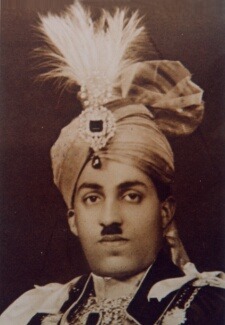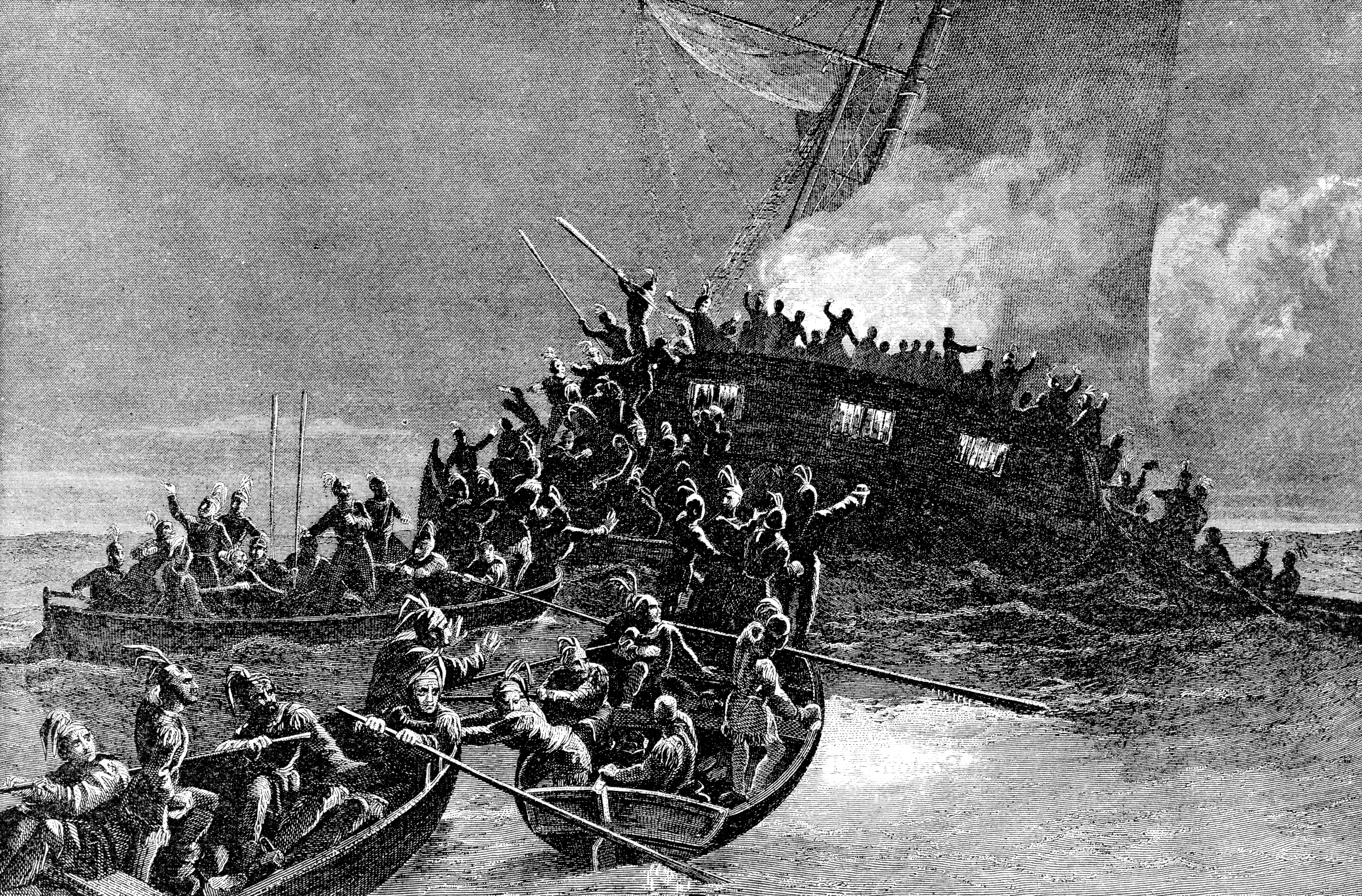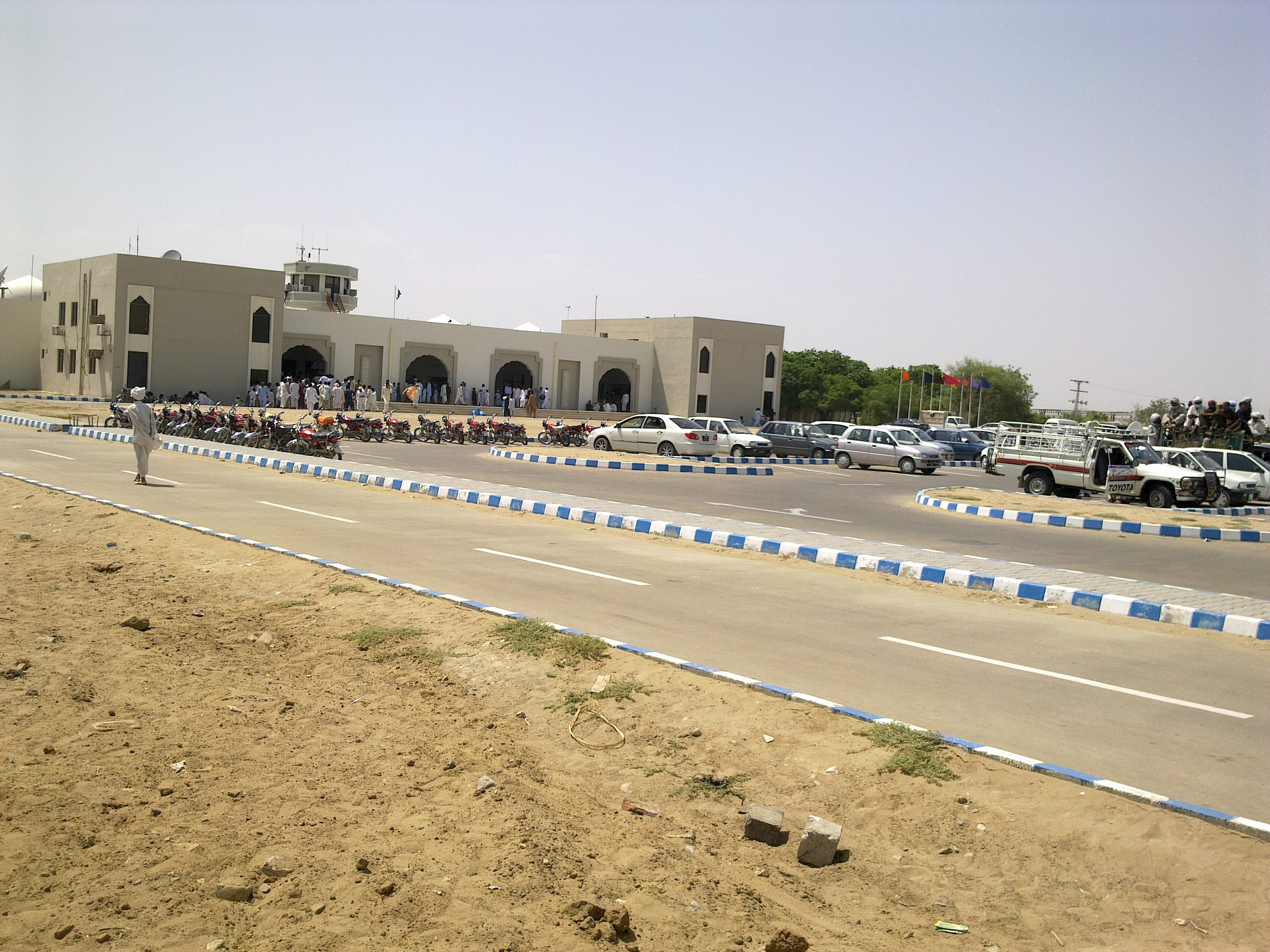|
Mahmud Khan Gujjar
Mahmud Khan Gujjar () (died 1772) was the Nawab of Dera Ghazi Khan from 1738 till 1772. Early life and rise to power Mahmud was the eldest son of Muhammad Yusuf, a grazier. After Yusuf passed away, his widow raised and educated her children. After completing his education, Mahmud, through the intercession of Makhdum Sahib, entered the service of Ghazi Khan. There, through his ability and connections, Mahmud gradutally rose to become Wazir of Ghazi Khan, though he appears really to have been more powerful than his nominal masters. In 1738, he set aside his master and himself became the ruler of the country. When the country west of the Indus was ceded to Nadir Shah in 1739, the latter, finding Mahmud Khan a good ruler, confirmed him as Governor. Reign Mahmud Khan Gujjar had power for upwards of thirty years, both over Dera Ghazi Khan and Muzaffargarh Muzaffargarh is a city in the province of Punjab, Pakistan. Located on the bank of the Chenab River, it is the capital of the e ... [...More Info...] [...Related Items...] OR: [Wikipedia] [Google] [Baidu] |
List Of Monarchs Of Punjab
The Monarchs of Punjab were the rulers of various kingdoms and republics of the Punjab beginning with the Vedic period and ending after the British Empire, British empire. Much of native Punjab during the ancient period was ruled by various Tribal republics, such as the Yaudheya, Yaudheyas, Madra, Trigarta kingdom, Trigarta, Audumbaras, Audumbara, Oxydrakoi, Malloi and Gandhara with their leaders and monarchs being largely unknown. The Ancient Period of Punjab saw the earliest known monarchs date back to the Vedic period. During the early to mid-6th century BCE, Taxila was ruled by King Pushkarasarin, Pukkusati, who was a contemporary of the Achaemenid Empire, Achaemenid rulers. However, details regarding subsequent monarchs remain largely unrecorded until the Indian campaign of Alexander the Great, Macedonian invasion of Punjab in the 5th century BCE. Following the death of Alexander the Great, monarchical power shifted to the Maurya Empire, Mauryan Empire in the 4th century BCE. ... [...More Info...] [...Related Items...] OR: [Wikipedia] [Google] [Baidu] |
Nadir Shah
Nader Shah Afshar (; 6 August 1698 or 22 October 1688 – 20 June 1747) was the founder of the Afsharid dynasty of Iran and one of the most powerful rulers in Iranian history, ruling as shah of Iran (Persia) from 1736 to 1747, when he was assassinated during a rebellion. He fought numerous campaigns throughout the Middle East, the Caucasus, Central Asia, and South Asia, emerging victorious from the battles of Herat, Mihmandust, Murche-Khort, Kirkuk, Yeghevārd, Khyber Pass, Karnal, and Kars. Because of his military genius,The Sword of Persia: Nader Shah, from Tribal Warrior to Conquering Tyrant "Nader commanded the most powerful military force in Asia, if not the world" (quote from publisher's summary) some historians have described him as the '' |
Nawabs Of Pakistan
Nawab is a royal title indicating a ruler, often of a South Asian state, in many ways comparable to the Western title of Prince. The relationship of a Nawab to the Emperor of India has been compared to that of the Kings of Saxony to the German Emperor. In earlier times the title was ratified and bestowed by the reigning Mughal emperor to semi-autonomous Muslim rulers of subdivisions or princely states in the Indian subcontinent loyal to the Mughal Empire, for example the Nawabs of Bengal. "Nawab" usually refers to males and literally means ''Viceroy''; the female equivalent is "Begum" or "''Nawab Begum''". The primary duty of a Nawab was to uphold the sovereignty of the Mughal emperor along with the administration of a certain province. The title of "nawabi" was also awarded as a personal distinction by the paramount power, similar to a British peerage, to persons and families who ruled a princely state for various services to the Government of India. In some cases, the t ... [...More Info...] [...Related Items...] OR: [Wikipedia] [Google] [Baidu] |
1772 Deaths
Events January–March * January 10 – Shah Alam II, the Mughal Emperor of India, makes a triumphant return to Delhi 15 years after having been forced to flee. * January 17 – Johann Friedrich Struensee and Queen Caroline Matilda are arrested, leading to his execution and her banishment from Denmark. * February 12 ** Breton-French explorer Yves-Joseph de Kerguelen-Trémarec discovers the uninhabited Kerguelen Islands in the Southern Indian Ocean. ** The Virginia Assembly amends an act to describe the punishments for the practice of gouging. * February 17 – The First Partition of Poland is agreed to by Russia and Prussia, later including Austria. * March 8 – Biela's Comet is first discovered by French astronomer Jacques Leibax Montaigne, but not proven to be a periodic comet until 1826, when Wilhelm von Biela correctly identifies its return. * March 20 – Pedro Fages, the Spanish Governor of Alta California, and Juan Crespí, a Catholic ... [...More Info...] [...Related Items...] OR: [Wikipedia] [Google] [Baidu] |
Mehmood Kot
Mehmood Kot (), (Punjabi: ) or Mehmud Kot is a city in District Muzaffargarh, Punjab, Pakistan Pakistan, officially the Islamic Republic of Pakistan, is a country in South Asia. It is the List of countries and dependencies by population, fifth-most populous country, with a population of over 241.5 million, having the Islam by country# .... Mehmood Kot was established by Mehmood Gujjar, who was the ruler of Dera Ghazi Khan in the 17th century and he built a fort here which he named after himself. The Lal Pir Power is in Mehmood Kot and produces 362 MW of electricity. The city is served by Mahmud Kot railway station. References {{Muzaffargarh Muzaffargarh Muzaffargarh District Populated places in Muzaffargarh District ... [...More Info...] [...Related Items...] OR: [Wikipedia] [Google] [Baidu] |
Bhagsar
Bhagsar is a town situated 14 km west of Muktsar, Punjab, India. Origin of name There was a water pond near Muktsar, where groups of people from far off places used to come to graze their cattle. One such group was of the "Brar" clan who used to come from Doda Pargana. They considered it a fortunate place as it had water all throughout the year and the pond was surrounded by a large number of trees which included 52 Pipal trees. The word Bhagsar is derived from two words "BHAG" meaning fortune and "SAR" meaning a water, thereby meaning the fortunate water. Earlier, it was also known as "BHAGPURI DHAB". Dhab also means a water reservoir. History Bhup Singh and Kapoor Singh were the founders of the village and later on Rai Singh s/o Alla Singh also joined them. Three pattis in the village are named after 3 brothers Alla Singh, Kapoor Singh and Bhup (Bamu) Singh. The village allotment deed was signed by S. Sher Singh, King of Faridkot state after receiving 1 camel & 1 m ... [...More Info...] [...Related Items...] OR: [Wikipedia] [Google] [Baidu] |
Muzaffargarh District
Muzaffargarh District () is a district of the Punjab province of Pakistan. Its capital is Muzaffargarh city. It lies on the bank of the Chenab River. History Muzaffargarh () was founded by the Saddozai Nawab of Multan, Nawab Muzaffar Khan, in 1794. Muzaffargarh district was annexed by the British from its former Sikh rulers after the Second Anglo-Sikh War of 1848–1849. In 1861 it became the separate Muzaffargarh District. After the independence of Pakistan in 1947, the minority Hindus and Sikhs migrated to India while the Muslim refugees from India settled in the Muzaffargarh District. Muslim refugees from East Punjab, Haryana, Jammu started arriving and crossed the border into Pakistan; many were given land in Muzaffargarh District to settle. Administration The district is administratively divided into the following three tehsils (subdivisions), which contain a total of 93 Union Councils: Demographics Population As of the 2023 census, present Muzaffargarh ... [...More Info...] [...Related Items...] OR: [Wikipedia] [Google] [Baidu] |
Dera Ghazi Khan District
Dera Ghazi Khan (, Punjabi language, Punjabi: ) is a Districts of Pakistan, district in Punjab, Pakistan. Its administrative capital is Dera Ghazi Khan. The district lies to the west of the Indus River. The Sulaiman Mountains rise to a height of in the north of the district. Popular tourist destinations are Fort Munro, Yek Bhai, Yakbai Hill station and Mubarki Top. Administration The district is divided into two tehsils which are divided into a total of sixty Union Councils of Pakistan, Union Councils: History The region around Dera Ghazi Khan was inhabited by Mallian people, Mallian people in late antiquity. Then it was part of the wider Multan region. Buddhist artifacts dating to the 1st to 3rd centuries CE have been found in Dillu Roy in Kot Chhutta tehsil. The town of Dera Ghazi Khan was founded at the close of the 15th century and named after Ghazi Khan, Nawab Ghazi Khan Mirani, son of Nawab Haji Khan Mirani, the city was founded when Shah Hussain of the Langah Su ... [...More Info...] [...Related Items...] OR: [Wikipedia] [Google] [Baidu] |
Indus
The Indus ( ) is a transboundary river of Asia and a trans- Himalayan river of South and Central Asia. The river rises in mountain springs northeast of Mount Kailash in the Western Tibet region of China, flows northwest through the disputed Kashmir region, first through the Indian-administered Ladakh, and then the Pakistani administered Gilgit Baltistan, Quote: "Kashmir, region of the northwestern Indian subcontinent. It is bounded by the Uygur Autonomous Region of Xinjiang to the northeast and the Tibet Autonomous Region to the east (both parts of China), by the Indian states of Himachal Pradesh and Punjab to the south, by Pakistan to the west, and by Afghanistan to the northwest. The northern and western portions are administered by Pakistan and comprise three areas: Azad Kashmir, Gilgit, and Baltistan, ... The southern and southeastern portions constitute the Indian state of Jammu and Kashmir. The Indian- and Pakistani-administered portions are divided by a "line of ... [...More Info...] [...Related Items...] OR: [Wikipedia] [Google] [Baidu] |
Punjab
Punjab (; ; also romanised as Panjāb or Panj-Āb) is a geopolitical, cultural, and historical region in South Asia. It is located in the northwestern part of the Indian subcontinent, comprising areas of modern-day eastern Pakistan and northwestern India. Pakistan's major cities in Punjab are Lahore, Faisalabad, Rawalpindi, Gujranwala, Multan, Sialkot, and Bahawalpur, while India’s are Ludhiana, Amritsar, Chandigarh, Jalandhar, Patiala, Mohali, and Bathinda. Punjab grew out of the settlements along the five rivers, which served as an important route to the Near East as early as the ancient Indus Valley civilization, dating back to , followed by migrations of the Indo-Aryan peoples. Agriculture has been the chief economic feature of the Punjab and formed the foundation of Punjabi culture. The Punjab emerged as an important agricultural region, especially following the Green Revolution during the mid-1960s to the mid-1970s, and has been described as the " breadbask ... [...More Info...] [...Related Items...] OR: [Wikipedia] [Google] [Baidu] |
Vizier
A vizier (; ; ) is a high-ranking political advisor or Minister (government), minister in the Near East. The Abbasids, Abbasid caliphs gave the title ''wazir'' to a minister formerly called ''katib'' (secretary), who was at first merely a helper but afterwards became the representative and successor of the ''dapir'' (official scribe or secretary) of the Sasanian Empire, Sassanian kings. In modern usage, the term has been used for government Minister (government), ministers in much of the Middle East and beyond. Several alternative spellings are used in English, such as ''vizir'', ''wazir'', and ''vezir''. Etymology Vizier may be derived from the Arabic ''wazara'' (), from the Semitic root ''W-Z-R''. The word is mentioned in the Quran, where Aaron is described as the ''wazir'' (helper) of Moses, as well as the word ''wizr'' (burden) which is also derived from the same root. It was later adopted as a title, in the form of ''wazīr āl Muḥammad'' () by the proto-Shi'a leaders ... [...More Info...] [...Related Items...] OR: [Wikipedia] [Google] [Baidu] |
Dera Ghazi Khan
Dera Ghazi Khan, abbreviated as D.G. Khan, is a city in the southwestern part of the Punjab, Pakistan, Punjab province of Pakistan. It is the List of cities in Punjab, Pakistan by population, 16th most-populous city in Punjab and List of most populous cities in Pakistan, 23rd in Pakistan, as of 2023. Lying west of the Indus River in the region of Derajat, it serves as the headquarters of its Dera Ghazi Khan District, eponymous district and Dera Ghazi Khan Division, division. History Foundation Dera Ghazi Khan is named after a Dodai tribe, Dodai chieftain Ghazi Khan, son of Haji Khan Mirani. It was founded at the end of 15th century when Baloch people, Baloch tribes were invited to settle the region by Husseyn Langah I, Shah Husein, the second Langah Sultanate, Langah Sultan of Multan. Rao Kelana, a powerful Bhati Rajput ruler of Pugal in the 15th century invaded Dera Ghazi Khan and defeated the Balochs. Dera Ghazi Khan was part of Subah of Multan, Multan province of the Mughal ... [...More Info...] [...Related Items...] OR: [Wikipedia] [Google] [Baidu] |






